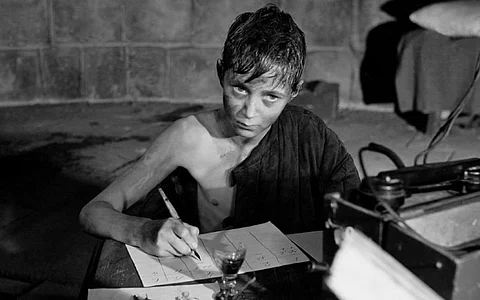
- Reviews
- Power List 2024
- Cannes 2024
- In-Depth Stories
- Web Stories
- News
- FC Lists
- Interviews
- Features
- FC SpecialsFC Specials

Russian auteur Andrei Tarkovsky's debut feature, Ivan's Childhood, is nothing short of a masterpiece (an opinion the legendary director rejected later in his career). What makes Ivan's Childhood a hauntingly captivating watch is that it blends pristine filmmaking with poetic storytelling, transforming it into a minimalist meditation on the scars of war, grief and loss.
The film tells the tale of an extraordinarily brave 12-year-old, Ivan Bondarev, who aspires to seek vengeance against the Nazi soldiers who were responsible for the death of his mother and sister, by working as a spy for the Soviet Army during the Second World War, or the Great Patriotic War as the Soviets called it. It is evident that the loss of his mother and his childhood have left on him indelible scars, despite his outspoken exterior. As Ivan traverses through the swamps, creeks and rivers, intermittent flashbacks reveal his cheerful childhood, the trauma of the losses he faced and how he ended up as a reconnaissance agent for the Soviet Army.
Ivan's Childhood was one of the few films of the Soviet era that dealt with the dark nature of war, in contrast to the many films that glorified the exploits of the Soviet Army. What makes this Tarkovsky feature stand out from other films of the genre is its dearth of violence, cacophony and bloodiness usually associated with the theme. Instead, Ivan's Childhood is deeply poetic, oftentimes melancholic. This is because Tarkovsky relies on his deft visual language to convey the mental impact of war, a motif that would later be attempted in war films across the globe. He uses static shot compositions, eerily silent backdrops and orchestral music to accompany some breathtaking sequences.
Ivan's Childhood is also relevant in today's global political climate as a critique of war and as a searing account of the grief, loss and mental trauma associated with it. As humanity goes through a tumultuous period with wars and conflicts raging in many parts of the world, the film is a reminder of the unpleasantness of war; it is a work of art that depicts the contrast between the delight and nostalgia of a happier, more peaceful period in life and the horrors and misery of wartime.